SSZT490 April 2019 DLP230NP , DLPA2000 , DLPA2005 , DLPA3000 , DLPC3436
Think about how often you look at photos or watch videos on your mobile device. Although many people prefer the convenience of a small smartphone that can fit in their pocket, they will switch to a tablet for a slightly bigger display when they want a more comfortable viewing experience.
With the onset of 5G, streaming high-resolution content to mobile devices will only become easier and more prevalent. Consumers will want larger displays to take advantage of this widely available high-definition (HD) content. Using projection is a great way to achieve large screen sizes from a small device. In the past, designers had to choose from lower-resolution imagers in order to create the most compact products. Applications where consumers want high image quality to share pictures or watch video from a mobile device typically require 1080p resolution, as shown in Figure 1.
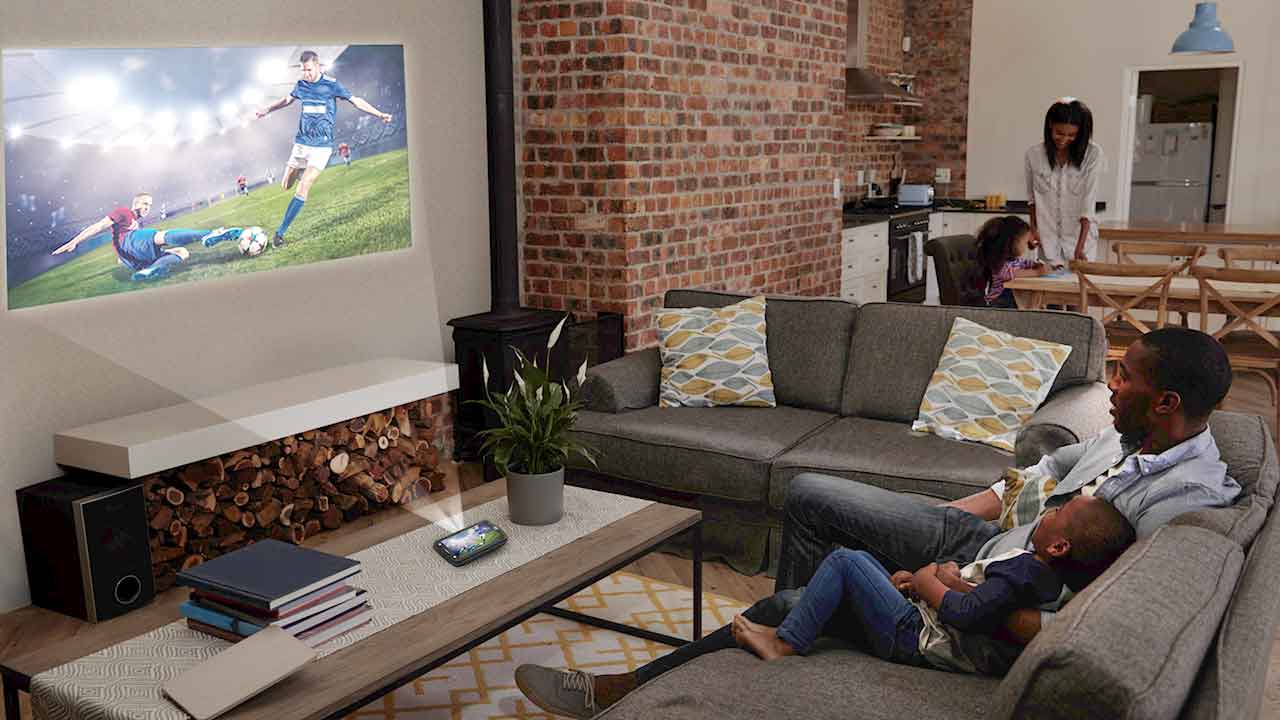 Figure 1 Leveraging a Mobile Projector
or Smartphone to View Full HD Content
Figure 1 Leveraging a Mobile Projector
or Smartphone to View Full HD ContentWith the latest DLP® Pico chipset, you can meet high-resolution requirements and create unique user experiences by embedding a full HD projector into mobile products. The DLP230NP chipset features a 0.23-inch 1080p digital micromirror device (DMD). Shown in Figure 2 with the DLPC3436 controller, it is the smallest microdisplay array on the market to deliver 1080p resolution (according to TI research as of the date of this post).
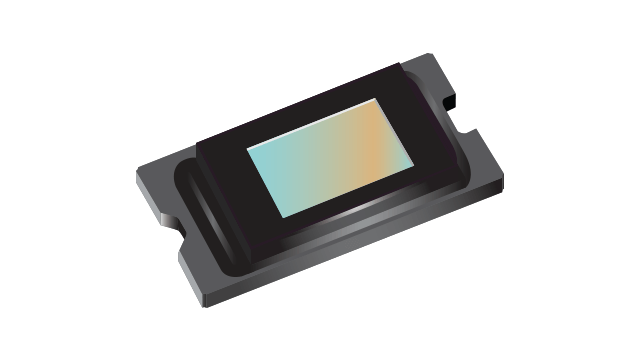
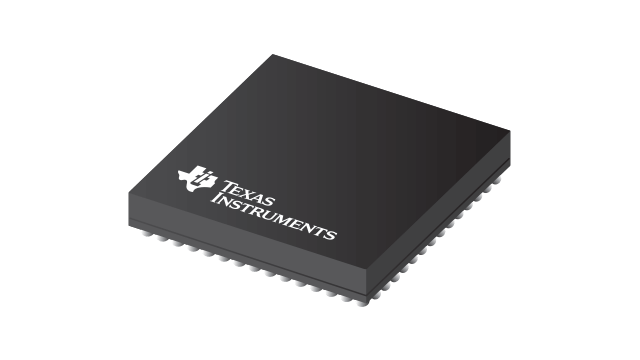 Figure 2 The DLP230NP DMD and
DLPC3436 controller
Figure 2 The DLP230NP DMD and
DLPC3436 controllerFigure 3 shows two different examples of how projection can enable a multiuser experience rather than individual viewing. For example, you could consider designing a product that would allow your customers to share mobile content with friends by projecting it onto a wall or table rather than passing around a smartphone. You could also bring significant product differentiation to a smart speaker or smart display product by leveraging projection to create a display that can be seen from across the room rather than only when directly in front of the unit.
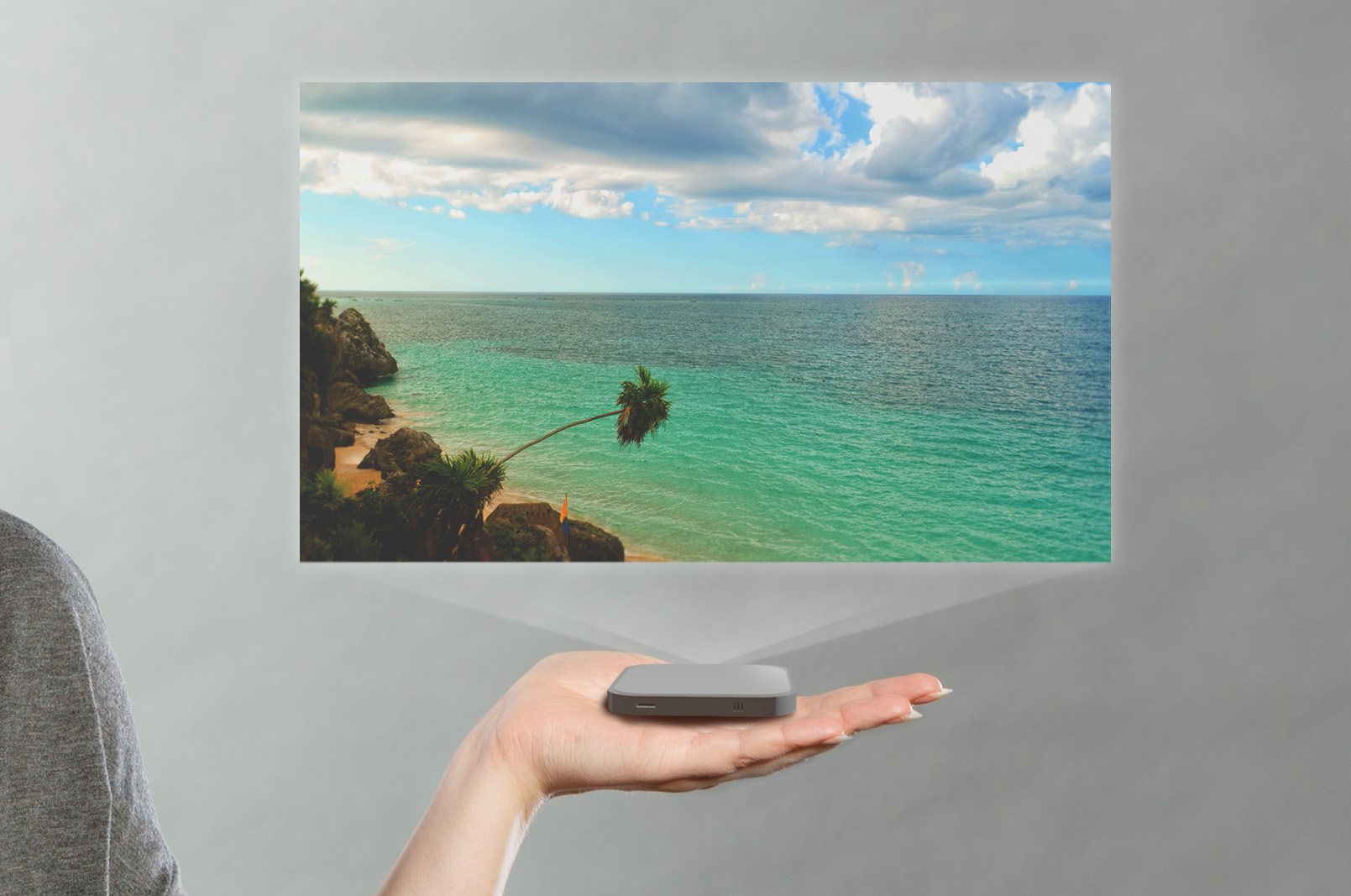
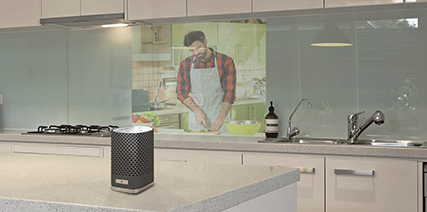 Figure 3 Mobile Projectors, Smartphones
and Smart Displays Enable Multi-user Viewing Experiences
Figure 3 Mobile Projectors, Smartphones
and Smart Displays Enable Multi-user Viewing ExperiencesEnabling Ultra-portable 1080p Displays
Creating an ultra-portable 1080p display has several requirements, including a very small microdisplay, high optical efficiency to save power, and sufficient brightness for the projected image size desired.
- Microdisplay size. The size of the active array of pixels is a critical dimension for reducing the overall size of your end product. Both the size and cost of the optics need to scale with the diagonal length of the microdisplay, making it a significant factor in the overall product volume. In this case, the DLP230NP DMD has a 0.23-inch diagonal, making it a good fit for ultra-portable applications that are extremely size-constrained.
- Optical efficiency. The DLP230NP DMD is optically efficient — up to 25 lumens/watt. Optical efficiency is a measure of how much of the power going to the illumination is actually transmitted to lumens on the screen, and is an especially important parameter for battery-operated mobile accessory products. If the system is inefficient, more of the power is lost as heat, which reduces overall brightness capability and can make the thermal management of the system more challenging.
- Display brightness. Another important factor is the brightness capability of the projector, since higher brightness enables larger display sizes. The DLP230NP can achieve more than 200 lumens. This makes it a great fit for mobile accessory products that will be used on the go and in varying ambient lighting conditions.
What You Need to Start Designing
The DLP230NP chipset is comprised of the 0.23-inch, 1080p DLP230NP DMD and the dedicated DLPC3436 display controller. The chipset also uses one of the DLPA2000, DLPA2005 or DLPA3000 integrated power-management integrated circuit (PMIC)/LED illumination drivers, depending on the amount of brightness and power required.
Figure 4 is a system block diagram of the DLP230NP, showing how the electrical components of the chipset are arranged with the appropriate illumination and optical components in order to create the projected image. An optical module is a compact assembly that includes a DMD, an LED-based illumination source, optics and associated mechanics.
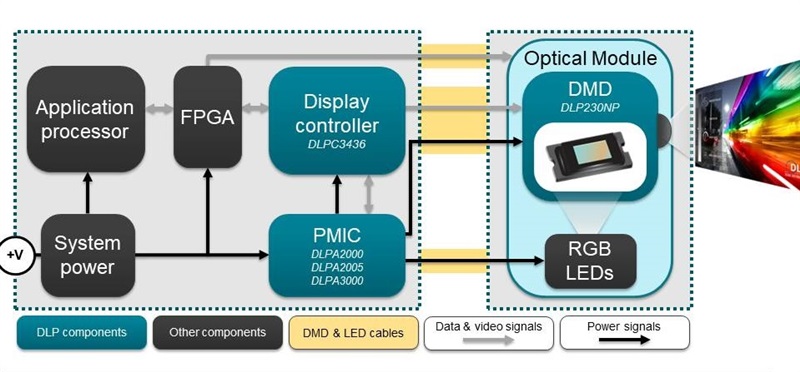 Figure 4 Simplified Application Diagram
for the DLP230NP Chipset
Figure 4 Simplified Application Diagram
for the DLP230NP ChipsetLeverage Production-ready Optics to Accelerate Your Design
Off-the-shelf optical modules reduce design time and get innovative products to market faster. TI collaborates with many optical engine manufacturers to offer developers a path to production-ready optical engines.
Manufacturers already developing optical modules for the DLP230NP chipset include ACTS, Shenzhen Anhua Optoelectronics Technology, Ongine Technology and Young Optics. Learn more at the DLP Pico Products optical engine site.
Conclusion
While a TV or tablet can’t fit in your pocket, the DLP230NP is enabling products that bring the big screen experience on the go. This chipset continues DLP Pico technology’s trajectory of enabling higher resolution displays from increasingly compact form factors. You can now pair the smallest and most affordable 1080p chipset in the DLP Products portfolio with production-ready optical engines to get to market quickly. Where will your customers take their portable 1080p display?
Additional Resources
- Download the DLP230NP DMD and DLPC3436 controller data sheets.
- Learn more about the 0.23-inch family of devices in the blog post, “Designing smaller mobile projection and display applications with DLP Pico products.”
- View reference design files for the DLPC3436.
- Read the application note, “TI DLP® System Design: Brightness Requirements and Tradeoffs,” for more information about selecting the product capabilities for a given application.
- Get started with TI DLP® Pico display technology.